Accelerate deals and increase win rates with the leading enterprise demo platform.
How Asana.com uses PLG to increase market share
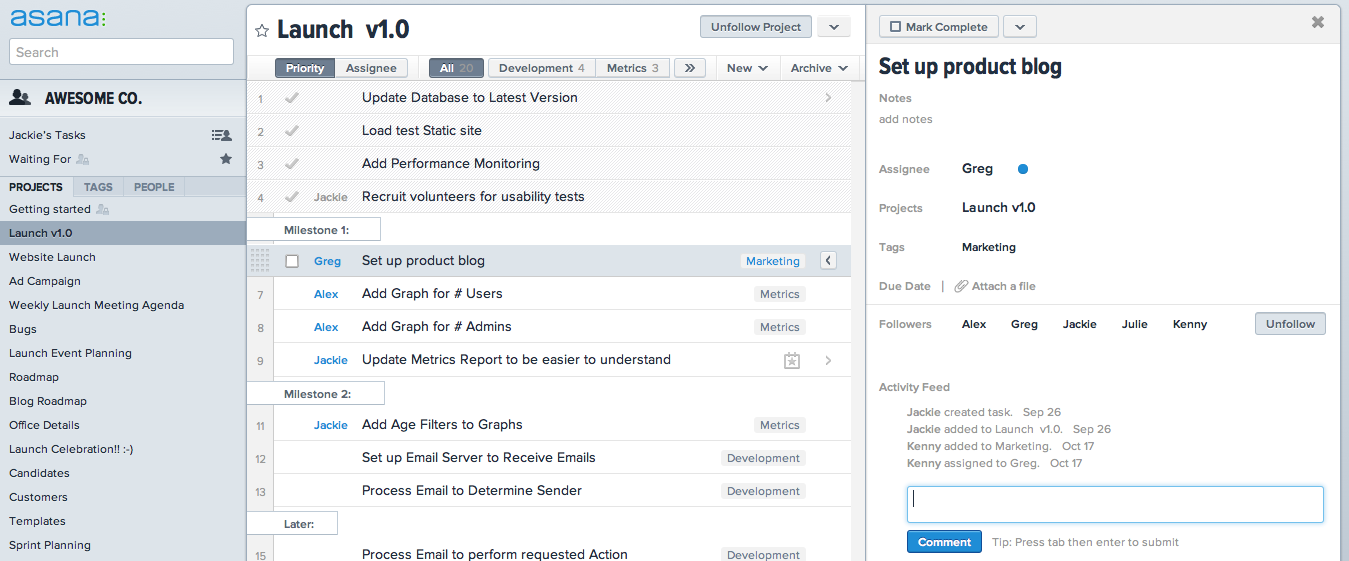
February 10, 2025
Table of Contents
Asana has been product-led since its inception in 2008. Its founders Dustin Moskovitz and Justin Rosenstein were keen on disrupting the atrocious B2B product experiences that seemed to be our only options at the time. I even remember them developing their own framework called LunaScript, which was supposed to be lightning-fast and improve the overall user experience.
At the time, Asana was one of the most responsive and pleasant user experiences in the market, even compared to B2C products. The sliding panels and rapid editing was an experience like no other.
Early Days User Experience
Source: https://techcrunch.com/2012/04/21/asana-stats/
They were in private beta for several years, which allowed them to iterate on the product with no pressure around rushing commercialization.
Once live, they were freemium from day one and continued to focus on refining the product without worrying about moving upmarket or selling to the enterprise. It was key for them to understand what user behaviors suggested that users were seeing value. In the early days, these were tasks created.
Around 2013-2014, I had lunch with Kenny Van Zant, who at the time was the head of all business and operations at Asana. To begin with, they were ramping up to build out an inside sales team to upsell existing users.
I asked Kenny how they would identify qualified prospects and he went on to explain a process that today would be considered a product-qualified lead (PQL) management workflow. One of the main strategies at that time was identifying who was inviting the most users to their account and then reaching out to upsell and expand.
Asana still leverages this product-led growth (PLG) strategy today. Recently they have decided to move up-market and have built out an enterprise sales effort. I spoke to one of their enterprise sales leaders earlier this year, who explained the hybrid PLG plus direct sales model they use today.
One of the amazing benefits of being in sales at Asana is that because they have been freemium for so long, it’s likely that someone from a target account has used Asana and has an existing user profile. This allows the sales team to source contacts from the current user base and leverages them to navigate the rest of the account, identify champions, and drive enterprise-wide deals.
Ok, let’s geek out on the current product for a second. There are some great PLG features to learn from!
Below you’ll see the very human-centric landing pages with the photography. This gives a very consumer-like feeling. Next, you will see the primary call-to-action (“CTA”) is Try for free. This CTA is featured in two locations above the fold, making it clear that their freemium funnel is their priority.
Sign-up is pretty easy. Email address first, which allows them to identify the user’s company by domain. It also reminds the user of the benefits of this free plan in the column on the right side.
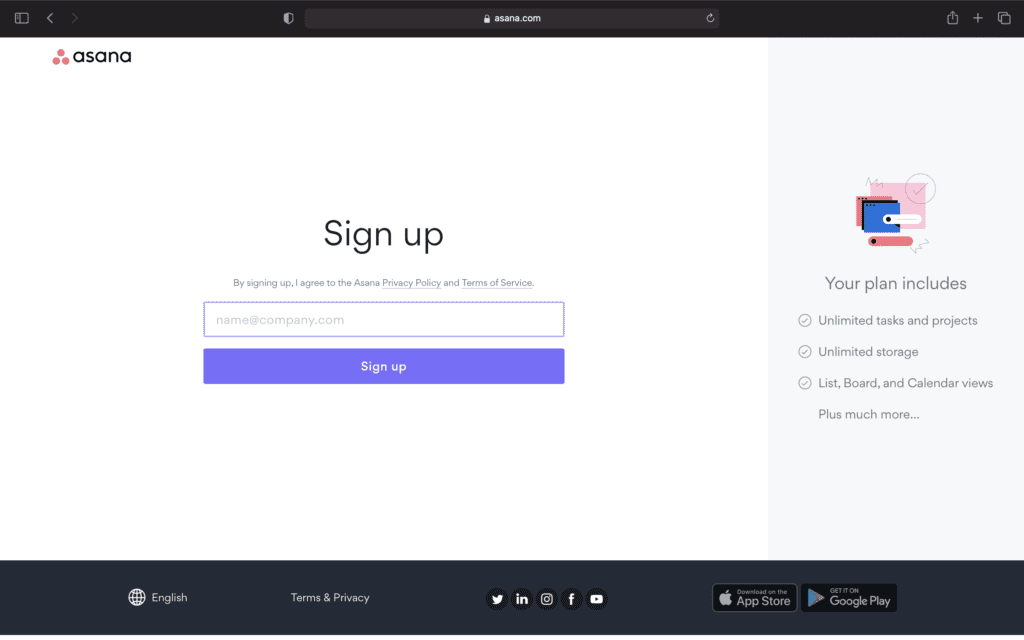
They then use the domain data plus the user’s selection below to either create a brand new Asana account or surface the existing accounts in their system.
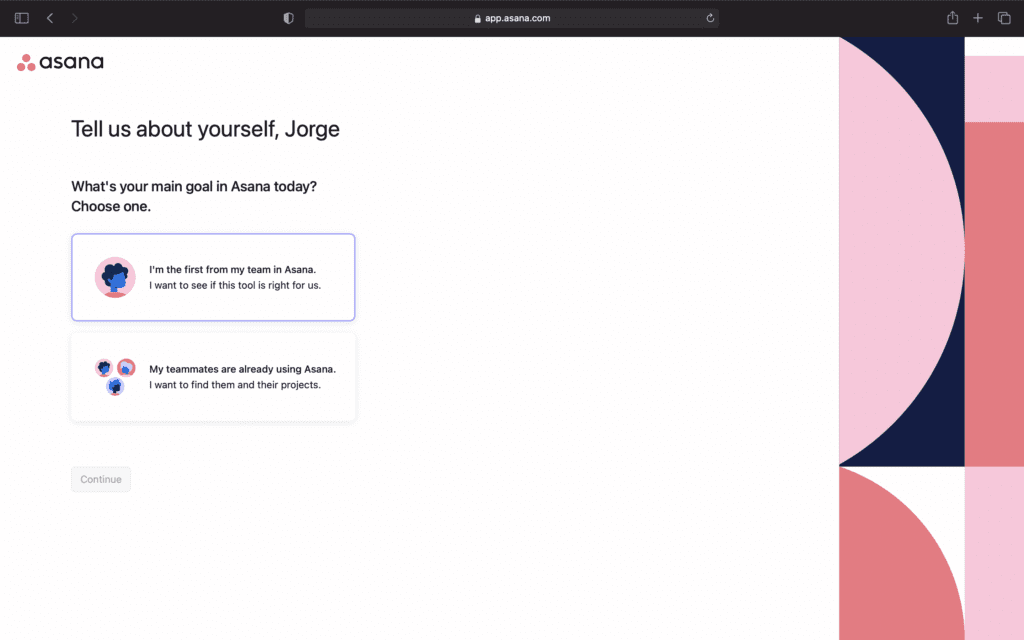
This is great because it gives Asana the ability to identify growing accounts from this source and limits errors around account/user matching.
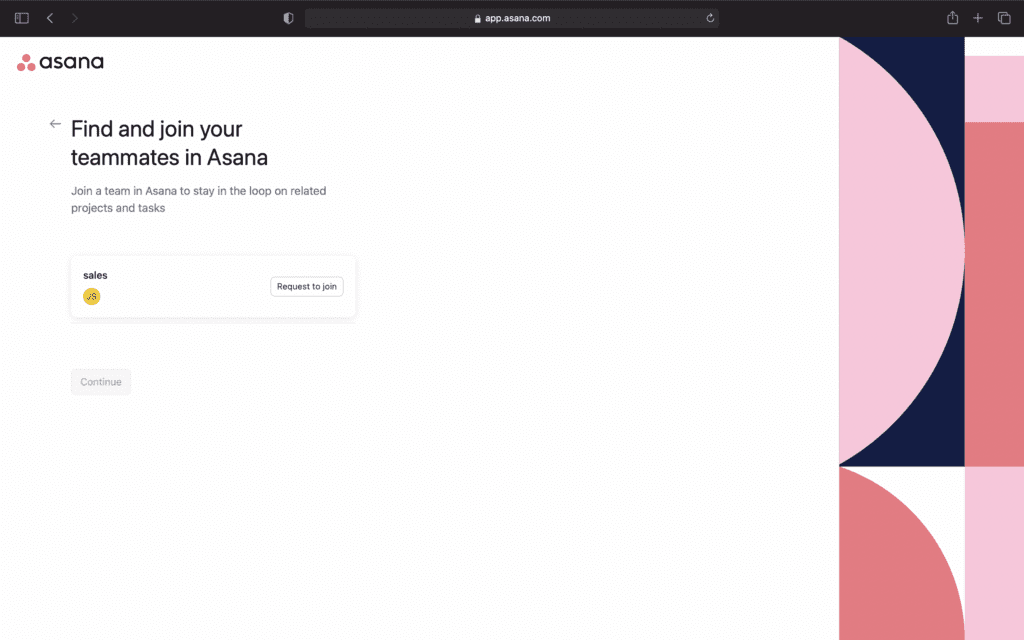
Next, you’ll find a getting started wizard that makes it easy to kick start the user’s usage by naming their first project.
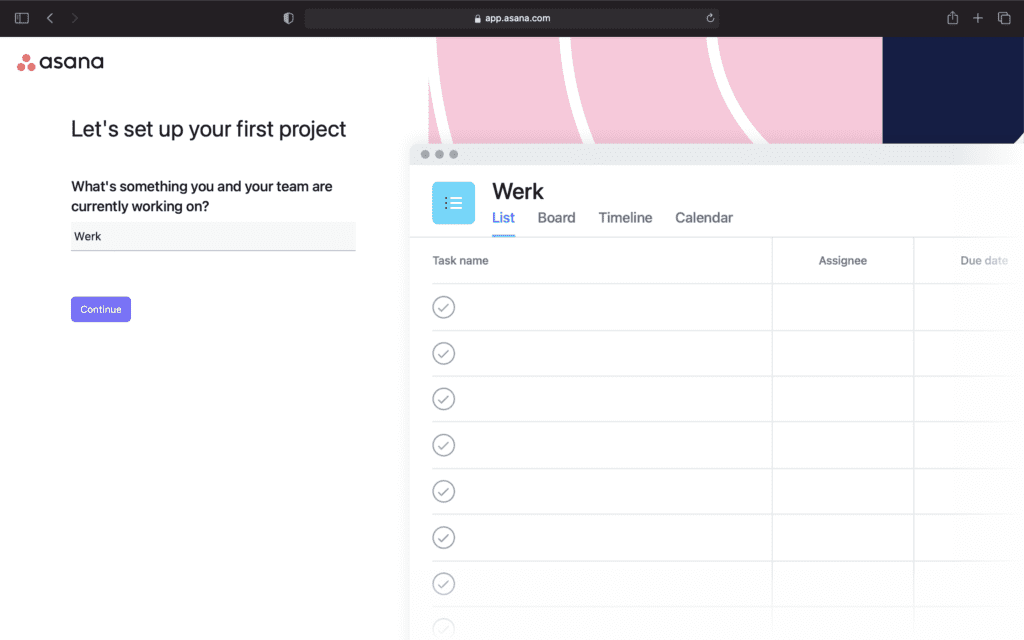
They also drive product adoption by asking you to add tasks within this getting started wizard.
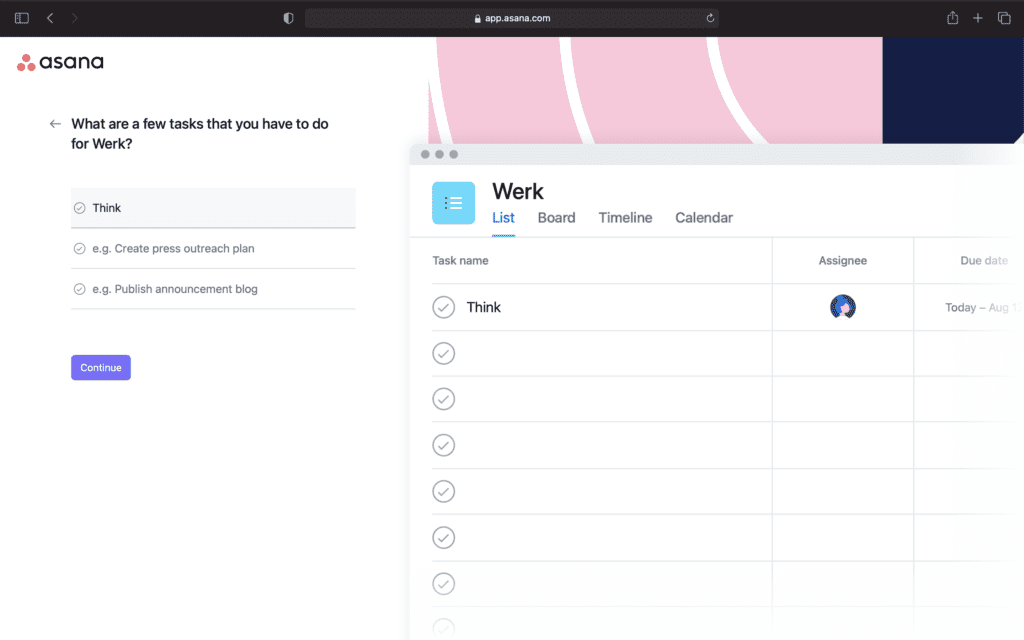
Once you are on your homepage, you can easily invite other teammates using the button on the bottom left.
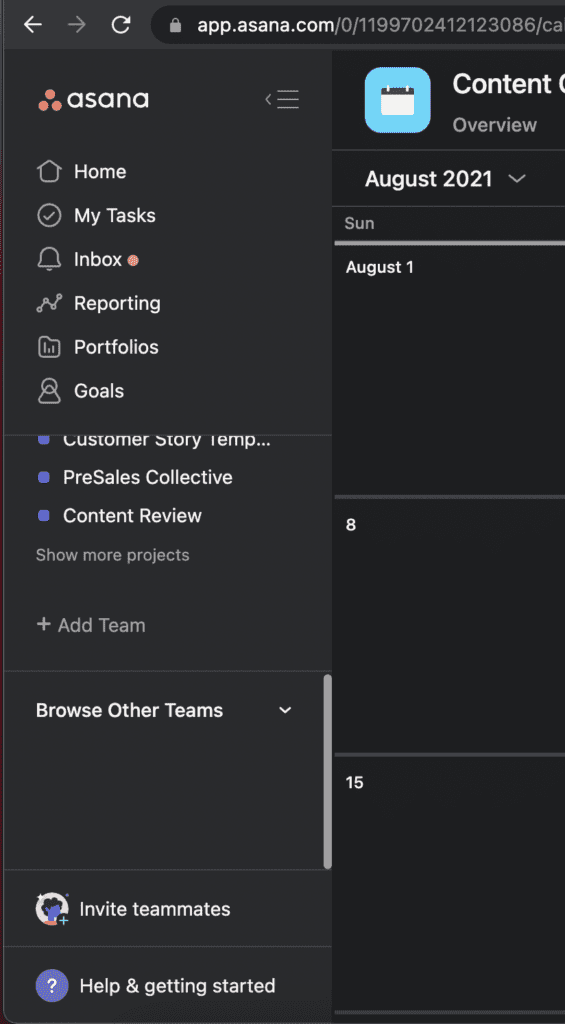
You can invite as many colleagues as you’d like via email or using a link.
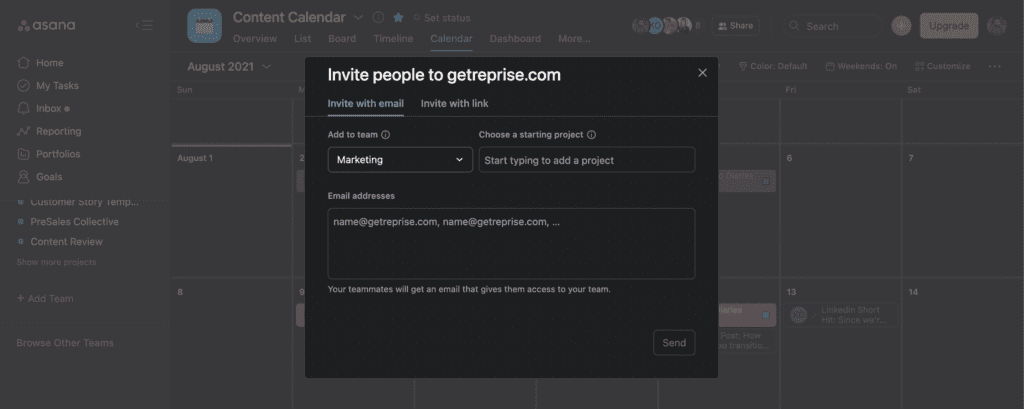
When you are ready to upgrade from the free version, you simply click on the bright orange button with the Upgrade CTA, located at the top right next to your profile picture.
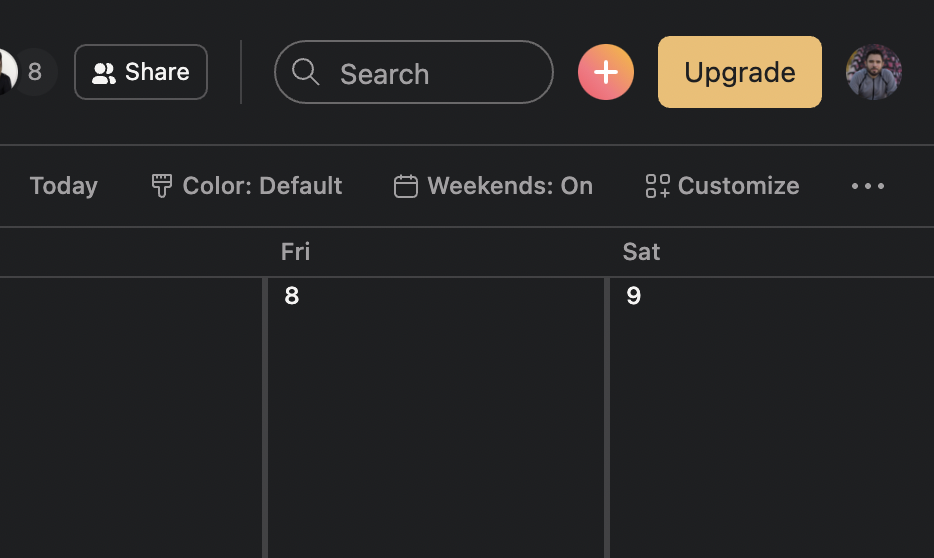
Next, you can upgrade via credit card to the Premium or Business plans. Which is classic self-service PLG.
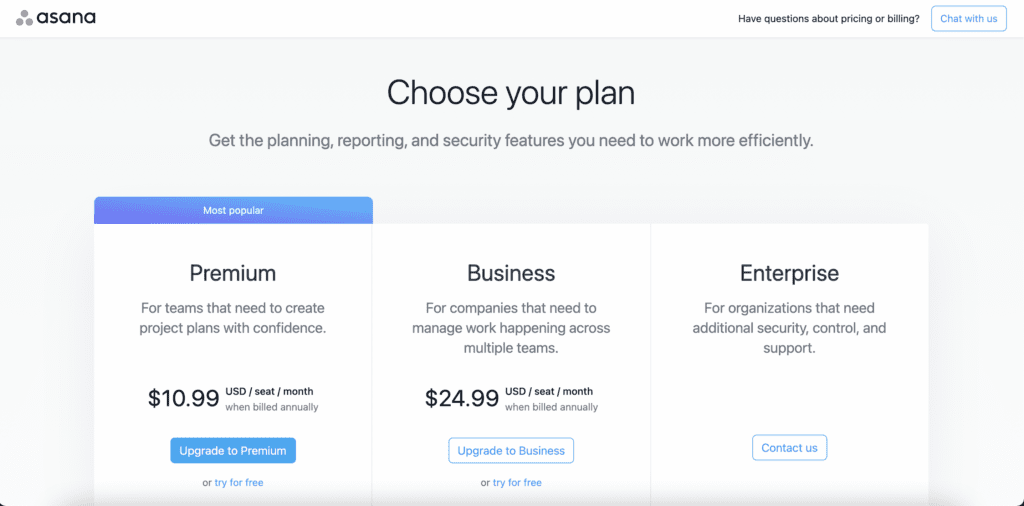
This is a super-smart feature below which allows you to upgrade your team only, or select the enterprise organization which is tied to your domain.
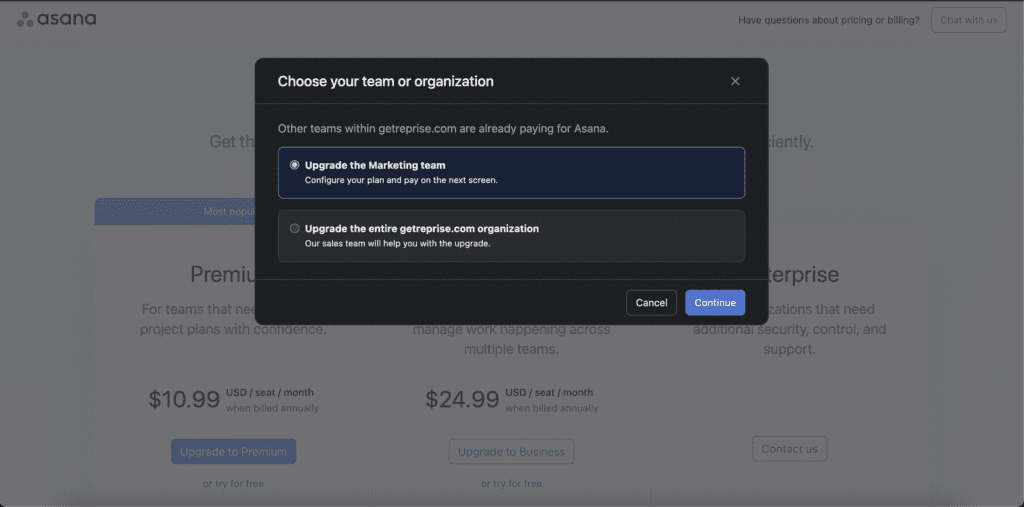
You can easily edit and pay as simply as buying an item on Amazon.com.
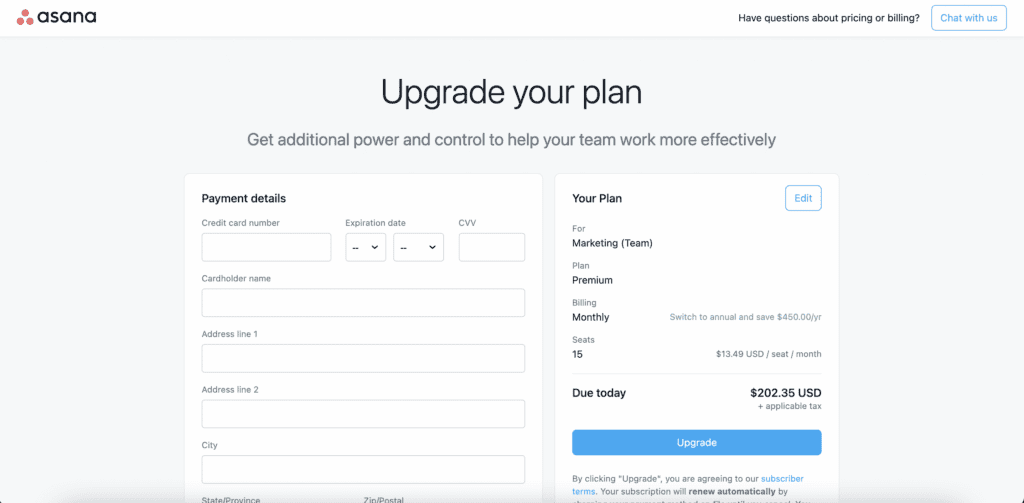
However, If you need the Enterprise version, this is where the hybrid model kicks in. Once you click on the “Contact Us” CTA you will be connected with a bot, which will then connect you with a human salesperson.
Asana’s model is based on seats, so it scales nicely when more users are added. It can easily justify an enterprise selling motion for large accounts.
Their enterprise sales team will then follow the traditional enterprise contracting model to get a deal done.
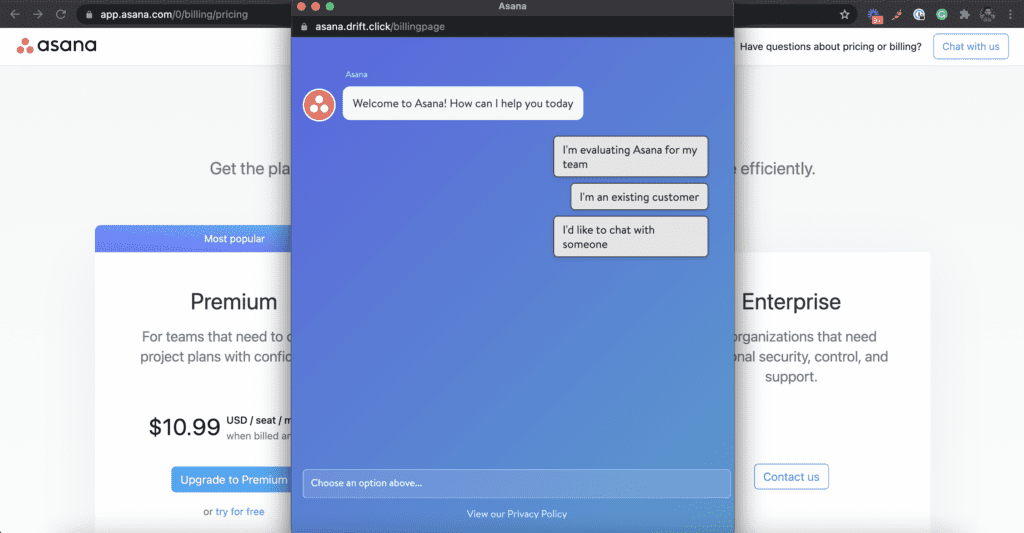
So, what have we learned so far from Asana’s example?
Here are a few takeaways:
- Offer a forever free plan. Then leverage free users to “land and expand” into larger accounts. You can reach out to power users to gain insights, even if they are not buyers. They can act as your champions and the best part is with PLG, it’s rooted in data.
- Make sure your free and self-payed product don’t cannibalize your sales-led products like Enterprise.
- Identify your version of “tasks created” and “teammate invites” to understand what user behaviors drive the most product adoption and then convert to paid plans.
- Your sales, product, and engineering teams would work together to sync the free user, and self-service plan data with the enterprise target account data to ensure full visibility. This will allow sales reps to build throughtful account plans that integrate your PLG data. This has been historically a hack amongst several tools via API. However, I believe can we done with tools like Correlated. And yes, my preferred CRM is still Salesforce.






